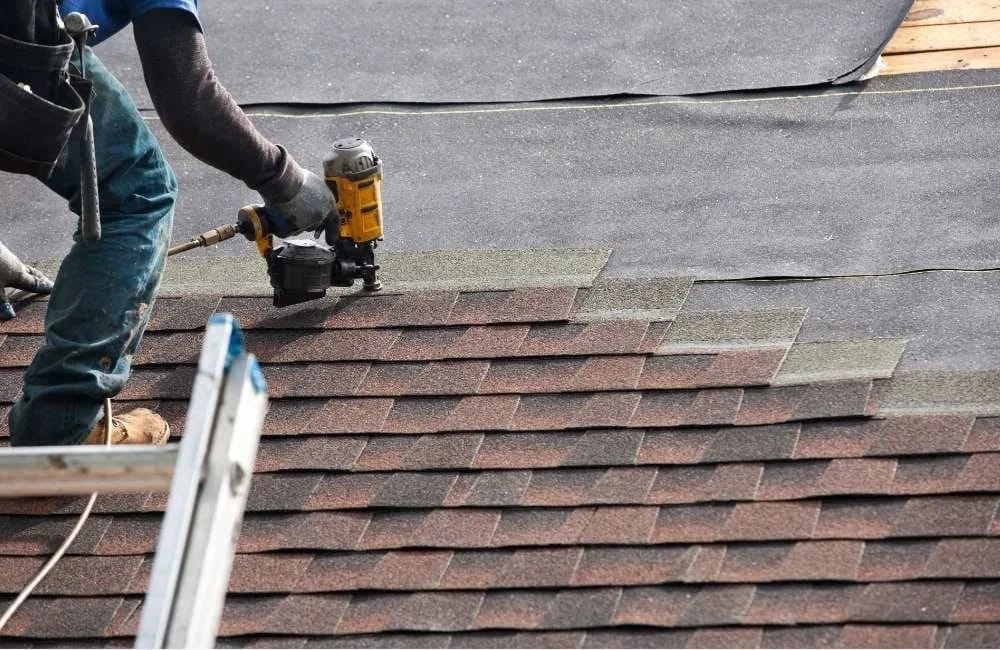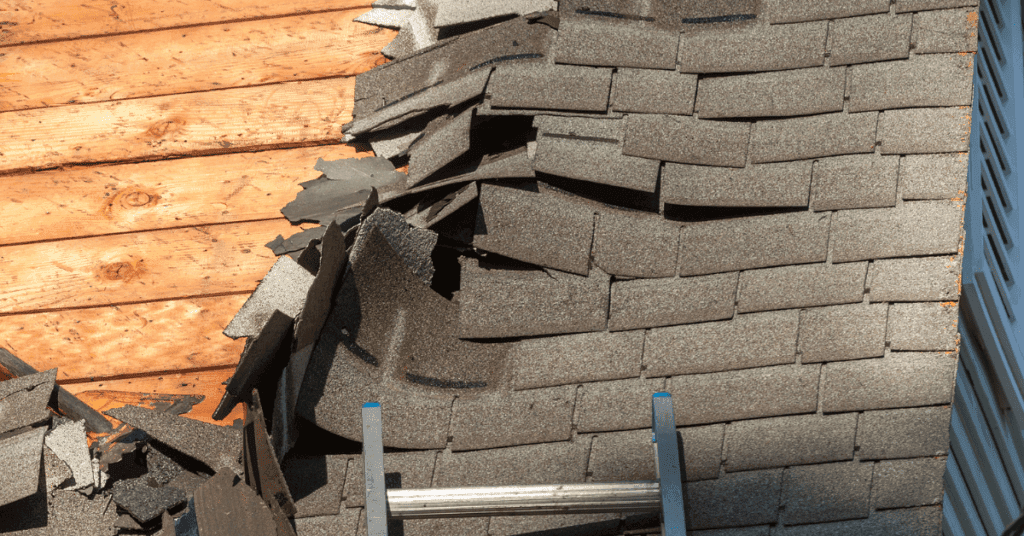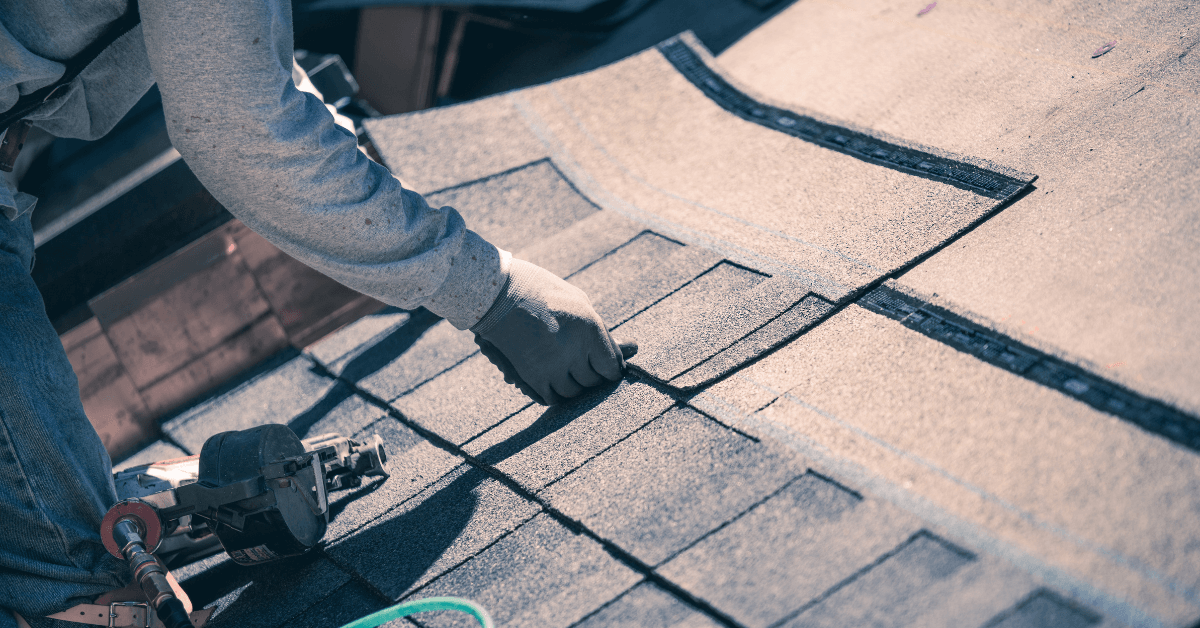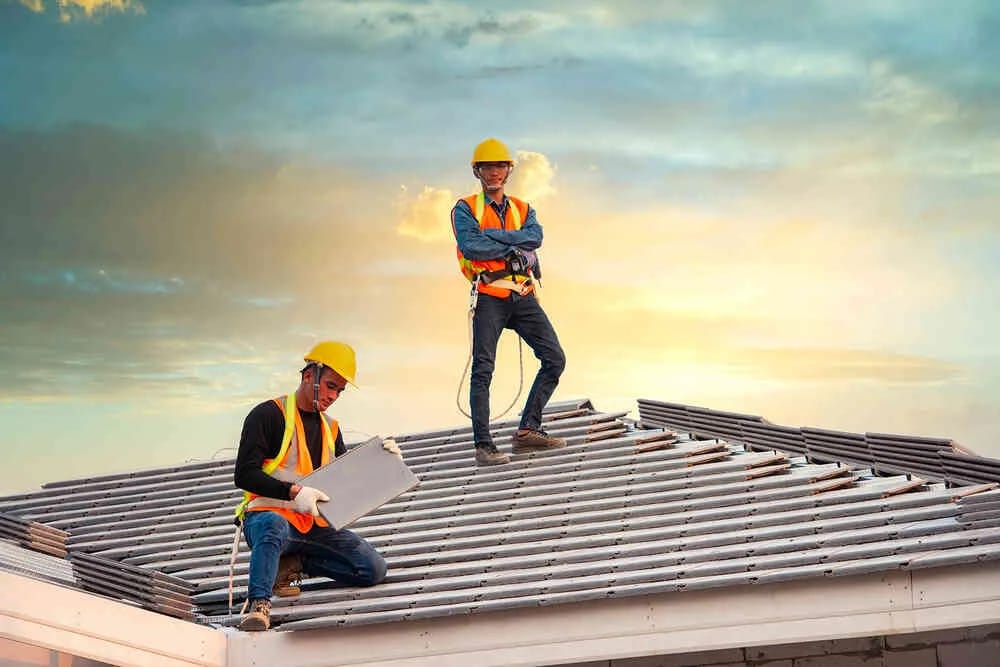
Why Ignoring Storm Damage Can Lead to Costly Roof Repairs
Storms can cause significant damage to roofs, often leading to issues that are not immediately visible. Roofs typically require replacement every 12 to 50 years, depending on the material and maintenance, but neglecting storm damage can drastically shorten their lifespan. Whether for residential or commercial roof repair, addressing storm-related damage as soon as possible is essential to prevent more serious complications.
Here’s how storm damage affects roofs, the risks of delaying repairs, and the steps to take after a storm to avoid expensive fixes.
Table of Contents
Key Takeaways✔ Small issues, like missing shingles or minor leaks, can quickly escalate into major structural damage, leading to expensive roof restoration instead of simple roof repair. ✔ Delayed repairs can void insurance coverage, forcing homeowners and businesses to pay for commercial roof repair or roof leak repair entirely out of pocket. ✔ Ignoring damage increases the likelihood of needing emergency roof repair, which is significantly costlier than proactive maintenance. ✔ A neglected roof reduces home and business resale value, making properties harder to sell and forcing owners to lower their asking prices. ✔ Gaps and leaks in a damaged roof weaken insulation, causing heating and cooling systems to work harder, leading to higher energy costs. ✔ Business owners risk lawsuits if roof damage leads to injuries, mold exposure, or water-related accidents, making timely commercial roof repair a critical investment. |

How Storm Damage Affects Your Roof
Storms bring a combination of heavy rain, strong winds, hail, and falling debris that can severely impact a roof’s integrity. Even minor damage that seems insignificant can weaken the overall structure, making the home or business vulnerable to further deterioration. Over time, untreated storm damage can escalate, leading to expensive roof repair or even requiring a full roof restoration.
1. Falling Debris
During a storm, branches, tree limbs, and other debris can fall onto the roof, causing direct impact damage. Even if no shingles are missing, a heavy impact can weaken the underlying decking, leading to structural instability. In severe cases, a roof can sag or develop stress fractures, increasing the risk of collapse. Large debris impacts often require commercial roof repair or roof restoration, especially in areas with frequent storms.
2. Cracked or Loose Flashing
Flashing is designed to seal vulnerable areas, such as chimneys, vents, and skylights, from water infiltration. High winds and hail can loosen or crack flashing, creating small gaps where water can seep in. This type of damage is particularly dangerous because it allows moisture to enter deep into the roof system, often unnoticed until leaks appear inside the home or business. Addressing flashing issues promptly can prevent the need for emergency roof repair.
3. Water Intrusion and Hidden Leaks
A storm-damaged roof may develop leaks that are not immediately visible. Water can travel along beams and insulation before appearing as stains on ceilings or walls. By the time leaks become noticeable, significant damage may have already occurred. Without timely roof leak repair, prolonged moisture exposure can lead to mold growth, wood rot, and compromised insulation, all of which contribute to higher energy costs and potential health hazards.
4. Compromised Gutter Systems
Storms often damage gutters, which direct water away from the roof and foundation. If gutters become clogged, dented, or detached due to high winds or hail, water can pool around the roof’s edge. This can lead to issues such as fascia and soffit damage, as well as water seepage into the attic. A poorly functioning gutter system exacerbates roof damage, making roof repair even more critical after a storm.
Risks of Ignoring Storm Damage
Delaying roof repair after a storm can expose a home or business to severe consequences that go beyond simple leaks. While some signs of damage may seem minor, they can quickly escalate into major structural and financial problems. Here are some of the most immediate risks associated with neglecting roof leak repair and storm damage:
1. Rapid Spread of Water Damage
Once water penetrates the roof, it does not remain confined to the initial entry point. Moisture spreads through the attic, seeping into insulation, wooden support beams, and drywall. As water travels, it can damage electrical wiring, increasing the risk of short circuits and potential fire hazards. In commercial buildings, this can disrupt operations and result in expensive commercial roof repair costs.
2. Compromised Structural Integrity
Moisture is one of the most destructive forces when it comes to a building’s stability. Wooden components, such as rafters, trusses, and decking, absorb water and begin to rot over time. This weakens the entire roof system, leading to sagging or, in severe cases, total collapse. If neglected, what starts as a small roof leak repair issue may escalate into a full roof restoration, requiring extensive reconstruction.
3. Growth of Mold and Mildew
Moist environments provide the perfect breeding ground for mold and mildew, which thrive in damp insulation, ceilings, and walls. Mold can spread within 24 to 48 hours after water enters the home, posing serious health risks, especially for those with respiratory conditions or allergies. Once mold growth begins, it becomes much harder to control and may require expensive remediation alongside roof repair.
4. Ceiling and Interior Damage
Water leaking from a damaged roof eventually reaches ceilings and walls, causing bubbling paint, sagging drywall, and unsightly stains. Over time, this can weaken the structure, leading to costly interior repairs. Additionally, furniture, flooring, and other valuables inside the home or business are at risk of water damage, further increasing restoration costs.
5. Increased Risk of Electrical Hazards
When moisture infiltrates electrical components, it can lead to short circuits, power outages, and, in extreme cases, electrical fires. Water exposure can corrode wiring and electrical panels, creating dangerous conditions that require immediate attention. Homeowners and business owners who delay emergency roof repair after a storm may unknowingly put their property and occupants at risk of electrical failures.
6. Pest Infestation
A damaged roof creates entry points for pests such as rodents, birds, and insects. These pests can nest inside insulation, chew through wiring, and cause additional damage to the home or commercial property. Once an infestation occurs, professional pest control services may be required in addition to roof repair, adding to the overall expense.
7. Higher Energy Costs Due to Insulation Damage
A well-maintained roof helps regulate indoor temperature by providing insulation and preventing energy loss. However, when storm damage is ignored, water can saturate insulation, rendering it ineffective. This forces heating and cooling systems to work harder to maintain comfortable temperatures, leading to a noticeable increase in energy bills. In commercial settings, this can significantly impact operational expenses, making commercial roof repair essential to maintaining energy efficiency.
8. Worsening Damage with Each New Storm
A weakened roof is more vulnerable to future storms, even ones that may not have been a threat before. Existing cracks, missing shingles, and structural weaknesses can become worse with each additional round of wind and rain, leading to an even greater need for roof leak repair. The longer the damage goes unaddressed, the more extensive—and expensive—the necessary roof restoration will be.
What Are the Financial Impacts of Delayed Roof Repairs?
Delaying roof repair after storm damage is not just a structural risk—it’s a costly financial mistake. Whether it’s residential or commercial roof repair in Southbury, CT, the financial burden of neglecting damage can be overwhelming. Here’s how failing to address roofing issues early can lead to severe financial consequences:
1. Escalating Repair Costs
Small roofing issues, such as a few missing shingles or a minor leak, may require only simple roof leak repair. However, when left unaddressed, those small problems often evolve into significant damage that affects multiple layers of the roof. On average, homeowners delay essential repairs for more than 10 months before taking action, significantly increasing the risk of widespread damage and higher repair costs. What could have been a low-cost patch job can quickly turn into a need for full roof restoration, which can be ten times more expensive than early intervention.
2. Increased Insurance Costs and Claim Denials
Most homeowners and commercial insurance policies cover storm damage, but there’s often a catch—claims must be filed within a certain timeframe. If the damage is ignored and worsens over time, insurance providers may argue that the deterioration resulted from neglect rather than the initial storm event. This can lead to claim denials, forcing property owners to pay for commercial roof repair or roof leak repair entirely out of pocket.
3. Emergency Repair Expenses
When damage is left unresolved, the risk of requiring emergency roof repair increases. A neglected leak can suddenly worsen, leading to water pouring into the home or business during the next heavy rain. In winter, trapped moisture can freeze, expanding and creating even larger cracks in the roof. In warmer months, high temperatures can cause further degradation of roofing materials, making the problem even worse.
4. Loss of Property Value
A damaged roof significantly reduces a property’s market value. Homebuyers and commercial investors often conduct thorough inspections before purchasing a property, and a neglected roof is a red flag that can deter potential buyers. Even if a property does sell, the owner may have to lower the asking price to account for the cost of roof repair or roof restoration.
5. Increased Utility Bills
A compromised roof affects more than just the building’s structural integrity—it can also significantly impact energy efficiency. Gaps in roofing materials allow heated or cooled air to escape, forcing HVAC systems to work harder to maintain indoor temperatures. Over time, this leads to higher energy bills for both residential and commercial roof repair customers.
6. Potential Legal Liabilities
For commercial property owners, ignoring storm damage can lead to legal liabilities. If a damaged roof results in injury—such as falling debris, mold exposure, or water damage causing a slip-and-fall incident—property owners may be held responsible. Legal fees and potential settlements can add another layer of financial strain, making prompt commercial roof repair a necessary investment in risk management.

How to Take Action After a Storm
After a storm, it is crucial to act quickly to minimize damage and prevent the need for extensive roof repair. Even minor issues, if left unaddressed, can escalate into costly repairs, requiring roof leak repair, roof restoration, or even emergency roof repair. Here are the key steps to take after a storm:
1. Conduct a Visual Roof Check
A post-storm inspection should begin with a thorough visual check of the property. Walking around the home or business, look for visible signs of damage, such as:
- Missing or Damaged Shingles: Displaced shingles expose the roof to leaks and further damage.
- Sagging or Uneven Roof Surfaces: Indications of structural weakness or water accumulation.
- Debris Accumulation: Tree limbs, branches, and other debris can puncture roofing materials.
- Clogged or Damaged Gutters: Broken or detached gutters can cause water to pool near the foundation.
- Granules in Downspouts: A sign that asphalt shingles are deteriorating and may require roof restoration.
2. Schedule a Professional Roof Inspection
While a homeowner or business owner can perform a basic visual inspection, a professional roof repair expert in Southbury, CT, has the experience and equipment to detect hidden damage. A roofing specialist can:
- Use infrared scanning to identify moisture trapped beneath shingles.
- Assess flashing and ventilation systems to ensure they are still functioning properly.
- Check for structural damage that may not be visible from the ground.
- Determine the level of damage to decide whether roof leak repair, commercial roof repair, or roof restoration is needed.
3. Make Temporary Repairs If Needed
If storm damage has left parts of the roof exposed, temporary repairs can help prevent further deterioration while awaiting professional roof repair. Some quick solutions include:
- Using tarps to cover damaged sections
- Applying roofing sealant
- Clearing debris carefully
4. Document the Damage for Insurance Claims
Proper documentation is crucial when filing an insurance claim for storm-related roof repair or roof restoration. To ensure a smooth claims process:
- Take clear photos and videos of all visible damage, including missing shingles, leaks, and structural issues.
- Make a detailed list of damages, including affected roofing materials and interior damage caused by leaks.
- Get a professional assessment from a roofing contractor to provide an official damage report.
- Keep receipts for any temporary repairs to ensure reimbursement from the insurance company.
5. Contact a Roofing Contractor for Permanent Repairs
Once the insurance process is underway, scheduling professional roof repair is the next step. A reputable roofing company will:
- Assess the extent of the damage and provide a repair or replacement plan.
- Help navigate the insurance claim process, offering documentation and repair estimates.
- Use high-quality materials that improve the roof’s resistance to future storms.
- Provide warranties or guarantees to ensure the work is durable and long-lasting.
Frequently Asked Questions
What is the number one cause of roof failure?
The primary cause of roof failure is prolonged moisture exposure, which leads to leaks, rot, and mold growth. Water infiltration weakens the underlying structure, making it susceptible to sagging or collapse. Regular maintenance and timely roof repair can prevent costly damage and extend the roof’s lifespan.
What happens if you don’t fix hail damage on a roof?
Unrepaired hail damage can cause cracks and dents in shingles, reducing their ability to protect against water intrusion. Over time, these vulnerabilities lead to leaks, insulation problems, and even interior water damage. Addressing hail damage early with roof leak repair helps prevent costly repairs down the line.
What damages a roof the most?
Extreme weather conditions like heavy rain, hail, strong winds, and prolonged UV exposure cause the most damage to roofs. These elements wear down roofing materials, loosen shingles, and create entry points for moisture. Without proper maintenance, minor damage can escalate into the need for roof restoration or full replacement.
Does insurance cover roof damage due to a storm?
Most homeowner and commercial insurance policies cover storm-related roof repair, but claims must be filed promptly. If damage worsens due to neglect, insurance companies may deny coverage for repairs. Proper documentation and timely inspections increase the chances of receiving full compensation.
What is the average life of a roof?
The lifespan of a roof depends on the material, with asphalt shingles lasting 20-30 years, metal roofs lasting 40-70 years, and tile or slate roofs exceeding 50 years. Climate, maintenance, and storm exposure can shorten or extend this lifespan. Regular inspections and timely commercial roof repair help maximize a roof’s durability.
Protect Your Home with Expert Roof Repair in Southbury, CT!
Don’t let minor roof damage turn into a costly problem—act now with Roofing Contractor of Southbury. Whether you need roof leak repair or roof restoration, our team provides top-quality service for homeowners in Southbury, CT. Ignoring storm damage can lead to expensive repairs, insurance issues, and structural damage, so trust Roofing Contractor of Southbury to get the job done right. Our team understands the local climate and provides durable, long-lasting solutions to protect your home.
